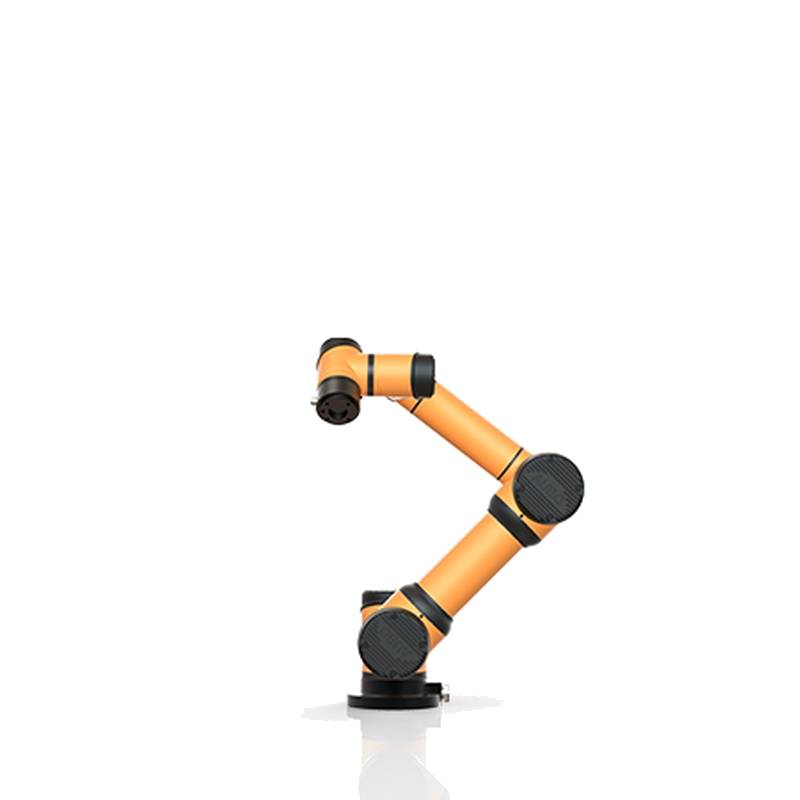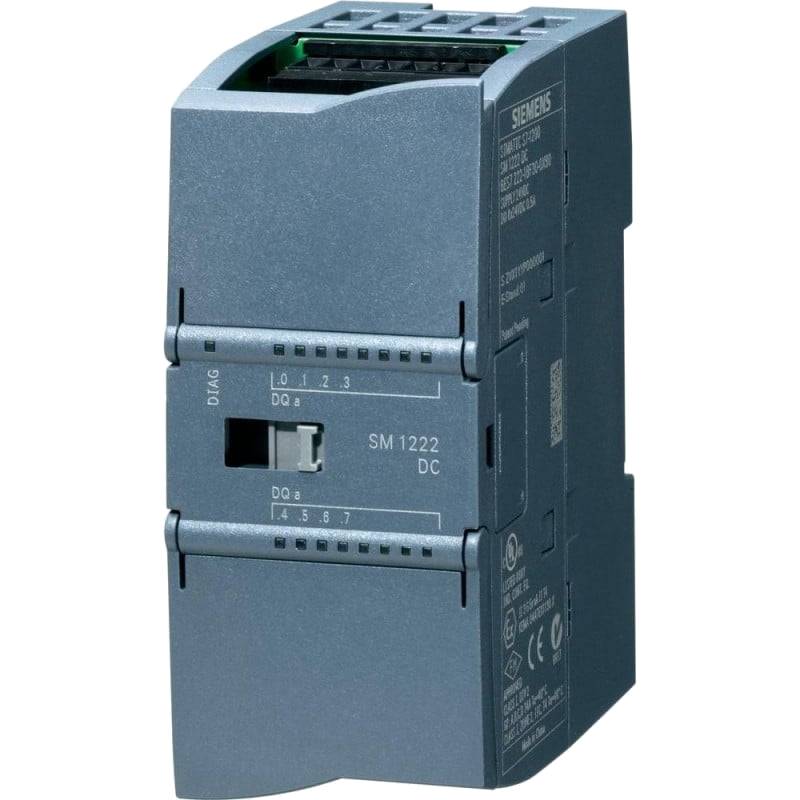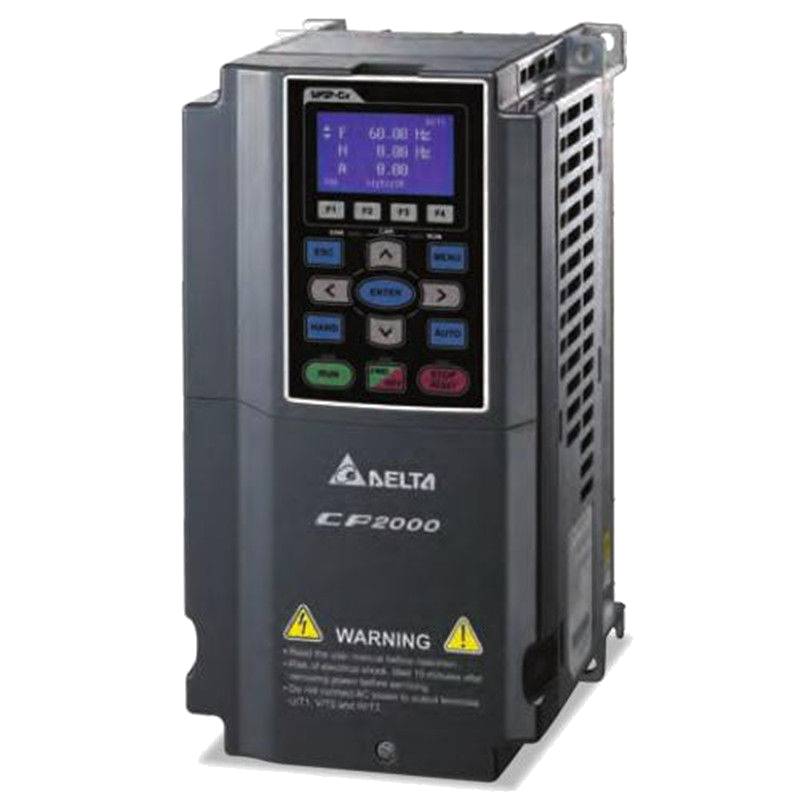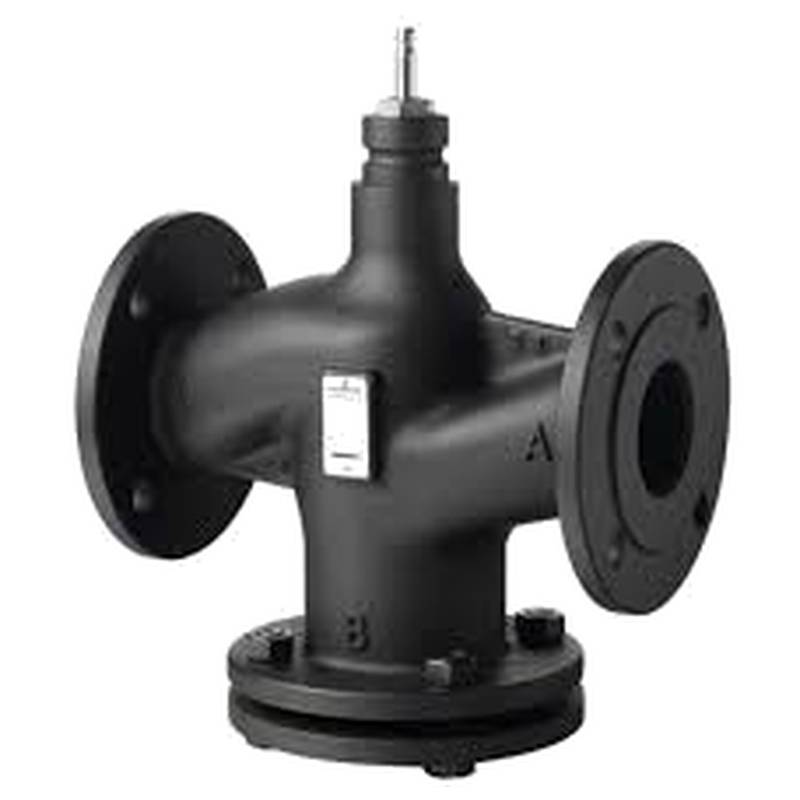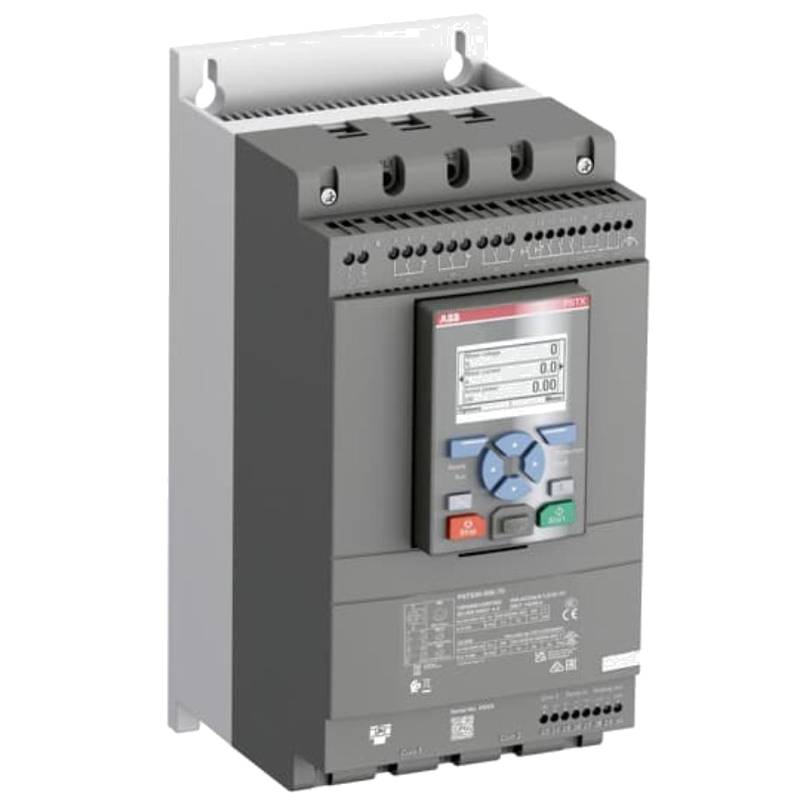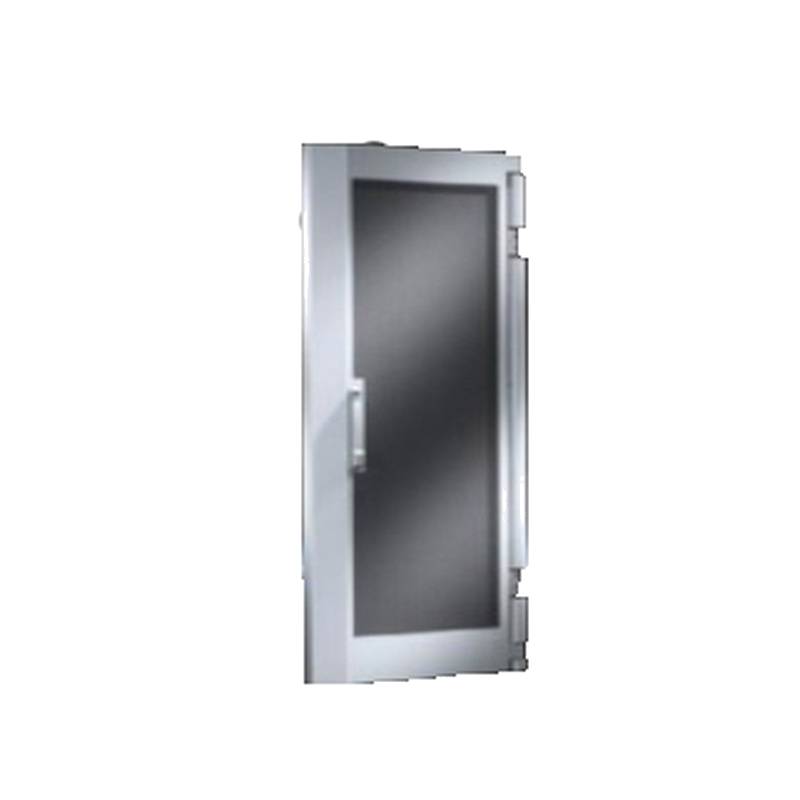
The Siemens 1FL6044-2AF21-1MG1 is a medium-power, high-inertia servo motor engineered for demanding industrial automation tasks. Its robust design delivers exceptional torque density, precise motion control, and high reliability, making it a cornerstone for applications requiring consistent performance under rigorous conditions. Key technical parameters include a rated power of 4.5 kW, a nominal speed of 2000 rpm, and a high inertia rating crucial for applications with significant rotating masses. The motor boasts an IP65 degree of protection, ensuring dust-tight operation and protection against water jets, thus extending its operational lifespan in harsh environments. Its superior thermal management capabilities allow for sustained peak performance without compromising component integrity.
Core Features & Market Positioning
Siemens positions the 1FL6044-2AF21-1MG1 as a high-performance solution for advanced motion control, differentiating itself through its high inertia characteristics which are ideal for applications needing smooth acceleration and deceleration of heavy loads. This motor excels in environments demanding precision and robustness, outperforming standard servo motors in applications prone to dynamic load fluctuations. Its integration within the broader Siemens automation ecosystem, including SINAMICS drives and SIMOTION controllers, offers a seamless and powerful control solution, further solidifying its market standing as a premium component for complex industrial machinery. The inherent reliability and precise control capabilities translate directly into increased throughput and reduced downtime for end-users.
Key Application Scenarios
The Siemens 1FL6044-2AF21-1MG1 finds its optimal application in sectors requiring significant torque and smooth operational dynamics, such as in the automation of heavy-duty packaging machinery, robotics for material handling with substantial payloads, and high-precision metal forming equipment like press brakes and stamping machines. Its high inertia is particularly beneficial for stabilizing rapid movements and counteracting external forces in winding and unwinding applications, including those in the textile and paper industries. Furthermore, it is well-suited for complex CNC machining centers where consistent torque delivery is paramount for intricate cutting paths and maintaining surface finish quality.
Practical System Integration Guidance
Integrating the Siemens 1FL6044-2AF21-1MG1 servo motor into existing automation systems is streamlined through its compatibility with standard industrial communication protocols, such as PROFINET and PROFIBUS, when paired with appropriate SINAMICS or SIMOTION drives. Electrical connections require careful attention to power and encoder cabling, ensuring proper grounding and shielding to prevent electromagnetic interference. For optimal performance and longevity, it is imperative to select a drive with sufficient current and voltage ratings that match the motor's specifications and the application's dynamic demands. Motor mounting should be secure, with consideration given to vibration dampening where necessary. Encoder feedback, typically a multi-turn absolute encoder, requires proper termination to ensure accurate position feedback.
Operation and Risk Mitigation
Safe operation of the Siemens 1FL6044-2AF21-1MG1 necessitates adherence to the manufacturer's guidelines, particularly concerning electrical safety and mechanical handling. Ensure all safety interlocks are functional before initiating operation. Overheating can be mitigated by ensuring adequate ventilation and by not exceeding the motor's continuous torque or peak torque ratings as specified in the technical documentation. Common troubleshooting often involves checking encoder connections for signal integrity and verifying that the drive parameters are correctly configured to match the motor's characteristics, such as its inertia and pole count. Fault codes displayed by the connected drive often provide direct insight into issues like overcurrent, overvoltage, or communication errors, guiding corrective actions.
Scalability & Long-Term Value
The Siemens 1FL6044-2AF21-1MG1 offers significant long-term value through its robust construction and its seamless integration into Siemens' Digital Enterprise portfolio. This facilitates future upgrades and expansions of automation systems, allowing for easy incorporation of additional motors or advanced control functionalities. Compatibility with TIA Portal software enables centralized engineering and diagnostics, simplifying maintenance and troubleshooting across an entire plant. Its ability to integrate with Industrial Internet of Things (IIoT) platforms allows for advanced data analytics, predictive maintenance, and remote monitoring, further enhancing operational efficiency and extending the motor's economic lifespan by enabling proactive interventions.
Frequently Asked Questions (FAQs)
What is the primary advantage of the high inertia of the Siemens 1FL6044-2AF21-1MG1?
High inertia provides smooth motion control for heavy loads. It helps dampen vibrations and reduces overshoot during acceleration and deceleration. This leads to improved precision and stability in demanding applications.
This characteristic is vital for applications like robotics and material handling. It ensures controlled movements even with significant payloads. The motor's design is optimized to handle and manage this inherent inertia effectively.
The stability offered by high inertia is crucial for maintaining quality in processes like winding or printing. It prevents jerky movements that could compromise the end product.
How does the Siemens 1FL6044-2AF21-1MG1 integrate with Siemens automation systems?
It seamlessly connects with SINAMICS drives and SIMOTION controllers. This allows for unified system configuration and control. PROFINET and PROFIBUS are common communication protocols used for integration.
The TIA Portal software offers a central platform for engineering. This simplifies parameterization, diagnostics, and overall system management. It ensures a cohesive automation solution.
This integrated approach enhances efficiency and reduces engineering time. It also facilitates future scalability and upgrades within the Siemens ecosystem.
What are the typical applications where the high inertia of this motor is most beneficial?
Heavy-duty robotics and automated material handling systems benefit greatly. Applications requiring precise control of large masses, like packaging machinery, are ideal. Metal forming equipment, such as presses, also leverages this feature.
Winding and unwinding processes in industries like paper and textile production are excellent use cases. The motor's inertia helps maintain consistent tension and smooth operation. It minimizes disturbances during material feed or take-up.
Complex CNC machining centers requiring stable torque delivery for intricate tool paths find it invaluable. Its ability to handle inertia is key for maintaining surface finish and accuracy.
What are the environmental considerations for installing the Siemens 1FL6044-2AF21-1MG1?
The motor features an IP65 protection rating. This means it is dust-tight and protected against low-pressure water jets. It is suitable for most industrial environments.
Ensure adequate ventilation around the motor to prevent overheating. Avoid installation in areas with excessive moisture or corrosive substances beyond its rating. Proper shielding of cables is important to mitigate EMI.
Regular inspection for dust accumulation or water ingress is recommended. Maintenance should follow the guidelines to uphold the IP rating and operational integrity.
What kind of drive is recommended for the Siemens 1FL6044-2AF21-1MG1?
Siemens SINAMICS drives are the primary recommendation. Specifically, drives from the SINAMICS S or G series are well-suited. These drives are designed for seamless integration.
The drive must be sized appropriately for the motor's power and torque requirements. Consider the application's dynamic load profile for accurate selection. Ensure compatibility with chosen communication protocols like PROFINET.
Proper configuration of drive parameters is critical. This includes motor data, control modes, and safety functions, to optimize performance and reliability.
What safety precautions should be taken during installation and operation?
Always disconnect power before any installation or maintenance. Follow local electrical codes and industry safety standards. Ensure proper grounding of the motor and associated equipment.
Utilize emergency stop functions and safety interlocks. Never operate the motor beyond its specified performance limits to avoid damage or failure. Train personnel on safe operating procedures.
Be aware of the motor's thermal characteristics. Allow for cool-down periods when necessary. Avoid direct contact with hot surfaces during operation.
How can I troubleshoot common issues with the Siemens 1FL6044-2AF21-1MG1?
Check all electrical connections, including power, ground, and encoder feedback. Ensure they are secure and free from damage. Verify drive parameter settings against motor specifications.
Consult the drive's diagnostic messages or fault codes. These often pinpoint the root cause, such as overcurrent, overspeed, or communication loss. Review error logs for historical data.
If issues persist, verify mechanical integrity. Ensure there are no obstructions or binding in the driven load. Consult the technical manual or Siemens support for advanced troubleshooting.
What is the role of the encoder in this servo motor system?
The encoder provides high-resolution position and speed feedback. This is essential for precise motion control and closed-loop operation. It enables the drive to accurately regulate motor performance.
Multi-turn absolute encoders are common, offering precise positioning even after power cycles. This eliminates the need for homing routines in many applications. The encoder's signal quality is critical for system stability.
Proper encoder cabling and termination are vital for accurate data transmission. Ensure shielding and connection integrity to prevent noise interference.
How does this motor contribute to IIoT and Industry 4.0 initiatives?
Its integration with Siemens IIoT platforms enables data collection. This data supports predictive maintenance and performance optimization. It allows for remote monitoring and diagnostics.
The motor can be part of smart automation architectures. This facilitates real-time data exchange across manufacturing processes. It supports enhanced decision-making and operational agility.
By providing reliable and precise motion control, it forms a foundational component for digitally enhanced factories. This drives efficiency and innovation in manufacturing.
What is the typical lifespan and maintenance required for this motor?
With proper installation and operation within specifications, these motors offer a long service life. Regular visual inspections for wear and tear are recommended. Routine checks of electrical connections and ventilation are important.
Periodic maintenance might involve checking bearing lubrication if applicable and ensuring that the IP rating is maintained. The primary requirement is adherence to operational parameters and avoiding overloads.
Preventive maintenance, guided by drive diagnostics and operational data, can further extend the motor's lifespan. This approach minimizes unexpected failures and downtime.
















